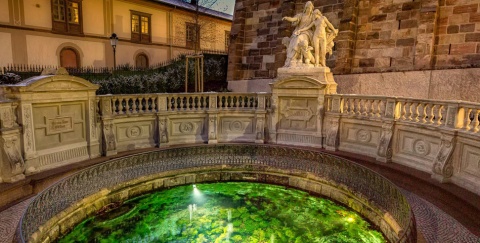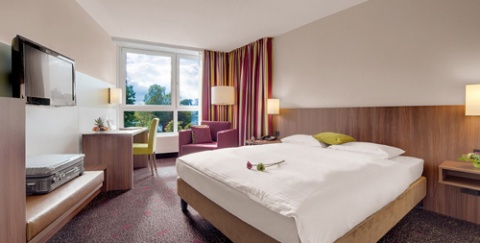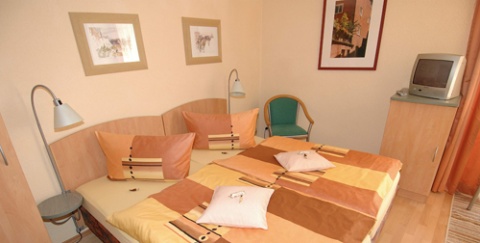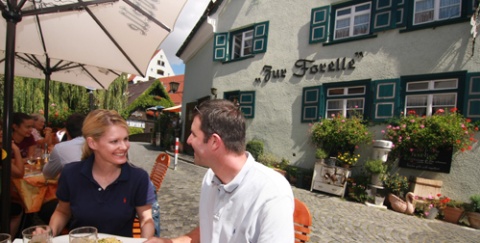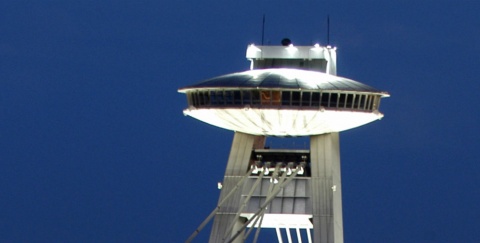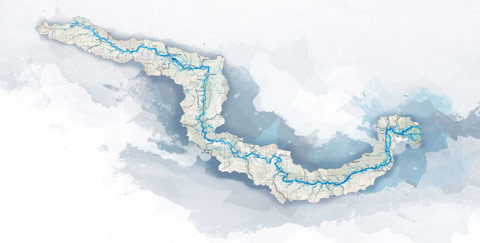

Immendingen
It's hardly fair, really. Immendingen has plenty of interesting buildings (the Upper and Lower Castles for instance). It lies in the middle of a geologically significant landscape, has any number of welcoming inns, a good museum, and much more besides. And yet most people visit for just one reason: ...
Country: Germany
Located on the Upper Danube in the Baden-Württemberg district of Tuttlingen, Immendingen has almost 6,000 inhabitants. Parts of the Danube Sink can be found here. Immendingen is bordered by Talheim to the north, Tuttlingen to the east, Emmingen-Liptingen to the south-east, Engen (in the district of Constance) to the south, and to the west by the towns of Geisingen and Bad Dürrheim (Schwarzwald-Baar district).
City Highlights
Does it trickle away, or sink? The people of Baden-Württemberg cannot seem to agree. The Badeners say it sinks, the Württembergers say it trickles away. But one thing is certain: for up to 155 days a year, when it gets to Immendingen, the Danube disappears – just as it is really getting going. For much of that time you can walk along the dry riverbed towards Tuttlingen. And back, of course, to get a better look at Immendingen and its architectural monuments. The St. Peter and Paul Catholic parish church, for example, originally built in the middle of the 13th century but extended over the centuries in various architectural styles. It was rededicated in 1946, and in 1963 its richly sonorous organ was installed. Or Upper Castle, Immendingen's most famous landmark and, until 1310, its only castle. The secondary overlords then erected their own castle so, for ease of reference, the two structures became known as the Upper and Lower Castles respectively (Oberes Schloss and Unteres Schloss). Both castles have changed hands many times in their long history and were even once used as the manufacturing base for an engineering company. Both have since been acquired by the municipal authorities. Today the Upper Castle is the town hall and the Lower Castle has been converted into an exhibition and community space. All in all, then, Immendingen has far more to offer than the Danube's temporary disappearing trick.
Both castles, the Upper and Lower, are an indelible part of Immendingen's history. That such a small place has not one but two castles can be attributed to the fact that, around the 13th century, Immendingen had two overlords. In 1310 the Upper Castle (today's town hall), was known simply as Immendingen Castle. Only later was it necessary to refer to the Upper and Lower Castles. The Upper Castle was originally built as a moated palace containing a courtyard with covered walkways and a Renaissance hall. The first phase of construction dates back to the 12th century. The second phase had to wait until the 15th and 16th centuries. Later still came the inner courtyard, where during times of war the local population took refuge from plundering and raids. The square in front of the castle was modelled on French lines. In 1984 the Renaissance hall was dried out and painstakingly restored. The Lower Castle burned down in 1643 and was rebuilt in 1706. The engineering plant, founded in 1835 and initially operated within the Upper Castle, was relocated to the Lower Castle in 1878. Until 1989, this was the home of Immendinger Giesserei & Maschinenfabrik. Since 2009, the Lower Castle has been owned by the municipal authorities and is used for exhibitions and community events. The Lower Castle's exterior features were also rebuilt as part of the Donauuferpark (Danube Riverside Park). The castle park is laid out in Renaissance style with a central fountain decorated with a baroque statue.
The Immendingen local history museum offers a richly varied reflection of Immendingen's history and surrounding countryside. The museum contains fossil finds from various excavations, principally in the 1950s and 1960s. Among the spectacular finds are a Hipparion prehistoric horse, rhinoceros, antelopes, sabre tooth tigers and a huge prehistoric elephant, and there is also a collection of plant fossils. Part of the museum is dedicated to the Amtenhausen Benedictine abbey founded in 1107, and there is a room documenting the local carnival celebrations. The Hegau volcanic conservation area begins in Immendingen with Mount Höwenegg. This basalt peak of approximately 800 metres was once the location of Hewenegg Castle and geologically is part of the Hegau mountains.
The Danube Sink is without doubt Immendingen's leading natural spectacle. Its first major manifestation can be seen at the railway bridge. For months at a time, the water sinks into the ground with a gushing and gurgling sound, flows southwards through an ever-expanding and still largely unexplored cave system, and then, after an average of 60 hours, reappears above ground twelve kilometres away at the Aachtopf, Germany's largest spring, where it gushes forth at the rate of 10,000 litres per second. The water in the Danube Sink leaks away through numerous cracks and crevices, meaning the formation of the karst topography is still at quite an early stage at these points. By contrast, the cave system that stretches all the way to the Aachtopf spring, and which forms the riverbed for the underground Danube, is most probably more developed. This can be deduced from the broadly similar water temperatures of the Danube and the spring: the temperature of the latter suggests more the presence of an underground river than a complex web of rock crevices. The Danube resurfaces as the Radolfzeller Aach, which then flows close by Radolfzell into Lake Constance. Part of the Danube therefore flows into the Rhine. This is a geographical anomaly in the Main European Watershed, which usually keep the basins of the rivers that flow into the North Sea and the Black Sea quite separate.
Accommodation and restaurants in Immendingen
Whether private lodgings, inns or guesthouses, Immendingen is not short of accommodation or places to eat and drink. The Brennerhof, for example, is a pretty inn whose first recorded mention is in 1322. Look out for the striking murals on the outside walls, the ancient vault and of course the food menu. A reasonably priced lunch is served daily from 11am. There is also a café-restaurant and a beer garden offering a taste of German gemütlichkeit.
Activities in Immendigen
The Danube Cycle Route, which in Germany reaches as far as Passau, leads along the Danube directly through Immendingen and past the natural phenomenon of the Danube Sink. Cyclists can pitch their tents at very reasonable rates at the campsite near to the sinkhole. The site has a covered shelter, barbecue area, playground, toilets and showers that can be used with tokens. Next to the campsite, Nina's ess-Art serves up good-value food and drink – a handy place to refuel for the journey ahead. It also serves breakfast for campers from the site.
The countryside around Immendingen can also be explored on various walking trails, which are suitable for active and less active walkers, as well as for those who prefer shorter walks. The trails are designated as being suitable for gentle strolls, Nordic walking or jogging. There are also trails suitable for buggies. And Immendingen is just as attractive in winter, with trails and chairlifts for cross-country and downhill skiers not too far from the town.
Contact:
Schlossplatz 2
78194 Immendingen
Tel.: +49 (0)74 622 4228
Fax: +49 (0)74 622 4224
buergerservice@immendingen.de
www.immendingen.de
DANUBE.TRAVEL has no control over the website content generated by users and/or visitors, neither such content represents a statement, opinion, recommendation or rating by DANUBE.TRAVEL. For further information please refer to DANUBE.TRAVEL – General Website Terms and Conditions of Use.
 EN
EN DE
DE


